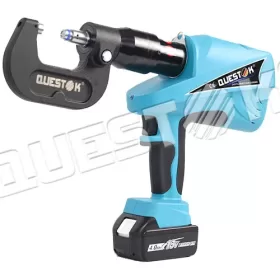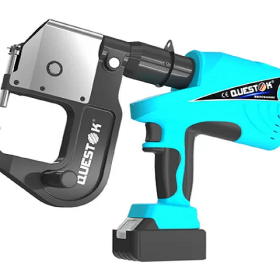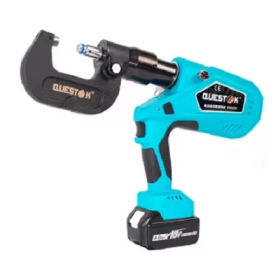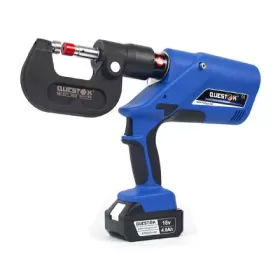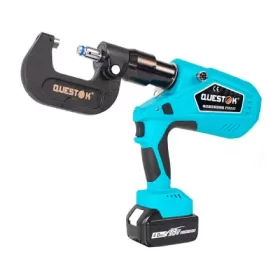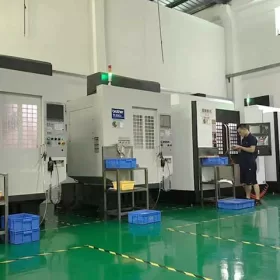Beginner’s Guide to Using Cold Riveting Machines in Fabrication
Beginner’s Guide to Using Cold Riveting Machines in Fabrication: A Comprehensive Overview
In the realm of fabrication, cold riveting machines play a crucial role in creating durable and versatile joints. As a beginner, understanding the intricacies of these machines can enhance your productivity and ensure the quality of your work. This guide will provide a comprehensive overview of cold riveting machines, covering their principles, operation, and best practices in fabrication.
Principles of Cold Riveting Machines
Cold riveting machines utilize the principle of plastic deformation to create a solid joint between two or more pieces of metal. Instead of heating the metal, these machines apply high pressure to a rivet, causing it to expand and fill the hole, forming a permanent and vibration-resistant connection.
Machine Components and Their Functions
Cold riveting machines consist of several key components that work in unison to create a secure rivet joint:
Dies: The dies form the rivet head on one side of the joint and support the material on the other side.
Ram: The ram applies the force necessary to deform the rivet.
Pneumatic or Hydraulic System: The power source that drives the ram.
Control Panel: Allows the operator to adjust the machine settings, such as force and cycle time.
Operation of Cold Riveting Machines
The operating sequence of cold riveting machines involves several steps:
Place the workpieces in the dies, aligning the holes.
Insert the rivet into the hole.
Activate the machine, which applies force to the ram.
The ram forces the rivet to deform, creating the head and securing the joint.
Repeat for all required rivet holes.
Application in Fabrication
Cold riveting machines find extensive use in various fabrication applications, including:
Automotive: Assembly of body panels, chassis components, and interior trim.
Aerospace: Construction of aircraft wings, fuselages, and control surfaces.
Construction: Joining metal sheets, beams, and structural elements.
Electronics: Securing electronic components and assemblies.
Appliances: Fabricating appliances, such as refrigerators, stoves, and washers.
Best Practices in Fabrication
To maximize the effectiveness and safety of cold riveting machines, follow these best practices:
Proper Material Selection: Ensure the materials being joined are compatible with the riveting process.
Optimized Pressure Settings: Adjust the machine settings to apply the appropriate force for the given material thickness and rivet size.
Correct Rivet Selection: Choose rivets with the correct diameter and length for the application.
Careful Inspection: Inspect the completed joints to ensure proper head formation, deformation, and absence of cracks or other defects.
Safety Precautions: Wear appropriate safety gear, including earplugs and safety glasses, and follow all manufacturer’s guidelines.
By adhering to these guidelines, you can effectively utilize cold riveting machines in fabrication, ensuring reliable and durable joints in your projects.
- Company News
- Industry News
- Tag
- Tags
-
The Advantages of Questok Rivet Guns: Precision, Efficiency, and Durability
In industrial fastening applications, the choice of tools directly impacts productivity, safety, and long-term cost-effectiveness. Questok rivet guns have emerged as a standout solution for professionals across aerospace, automotive, and construction sectors. Combining advanced engineering with user-centric design, these tools deliver unmatched performance. Below are the key advantages that make Questok rivet guns a preferred choice:
-
Rivet Gun FAQ
Rivet Gun FAQ-SPR
-
Fast Assembly and Repair With Cordless Solid Rivet Gun
Questok cordless solid rivet gun stands out as a pivotal innovation, merging portability with power to facilitate efficient and effective fastening in a myriad of applications.
-
Redifine The Role of Self-piercing Riveting Gun Machine
Self-piercing riveting adopts high-speed mechanical fastening skill that joins thin sheet materials, typically steel and aluminum alloys.
-
The Latest Innovations in Clinching Tool Design
Explore the latest innovations in clinching tool design, redefining precision, efficiency, and versatility in material joining.
-
The Application and Maintenance of Self-Piercing Rivet Guns
Delve into the applications of self-piercing rivet guns in the automotive and aerospace industries and reveal the essential maintenance practices that ensure their accuracy and efficiency.
-
Rivetless Riveting Gun for Ventilation Duct Projects
The ventilation duct rivetless gun is a tool for riveting ventilation ducts without rivets.
-
Guide to Using Self-Piercing SPR Riveting Gun
In the automotive industry, self-piercing SPR (Self-Piercing Rivet) riveting guns are commonly used for joining metal components in vehicle bodies, including BMW vehicles.
-
Rivet Gun FAQ
Rivet Gun FAQ-SPR
-
Versatile Fastening- Applications of the Handheld Rivet Gun Across Industries
In the realm of fastening, the handheld rivet gun stands as a testament to ingenuity and versatility. Its ability to effortlessly join materials with sheer strength and permanence has revolutionized manufacturing and construction processes, leaving an enduring mark on diverse industries. Aerospace: Where precision and reliability are paramount, the rivet gun shines. In aircraft assembly, […]
-
Time-Saving Tools- Speeding Up Projects with Electric Blind Rivet Guns
In the whirlwind of project deadlines, every minute counts. But what if there was a tool that could dramatically reduce assembly time, giving you an edge in the race against the clock? Enter the electric blind rivet gun: your secret weapon for lightning-fast and effortless riveting. Electric blind rivet guns are the ultimate time-savers for […]
-
Streamlining Fastening- How an Electric Blind Rivet Gun Enhances Efficiency
Introduction In the realm of manufacturing and assembly, fastening plays a crucial role in securing components and ensuring structural integrity. Traditional manual rivet guns, while reliable, are often time-consuming and labor-intensive. The advent of electric blind rivet guns has revolutionized the fastening process, significantly enhancing efficiency and productivity. This article delves into the benefits of […]
-
The Role of Automation in Electric Rivetless Clinching
Electric rivetless clinching (ERC) is a lightweight joining process that eliminates the need for rivets or other fasteners. This can lead to significant cost savings and increased production efficiency. Automation plays a critical role in ERC, enabling high-speed and high-volume production. Automated Feed Systems Automated feed systems are used to accurately position the two workpieces […]
-
Why Choose a Universal Self-Piercing Riveting Gun for Your Projects?
In the realm of construction and fabrication, riveting guns stand as indispensable tools for creating secure and robust connections. Among the various types available, universal self-piercing riveting (SPR) guns have emerged as a game-changer due to their versatility and efficiency. This article will delve into the compelling reasons why choosing a universal self-piercing riveting gun […]
-
Why Choose Stainless Steel Hollow Rivets for Your Projects?
In the world of industrial manufacturing, choosing the right fasteners for your projects is crucial for ensuring longevity and reliability. Among the many options available, stainless steel hollow rivets stand out as a superior choice for a wide range of applications. This article delves into the compelling reasons why stainless steel hollow rivets are the […]
-
Top Trends in Electric Rivetless Clinching Guns
In the realm of fastening technology, electric rivetless clinching guns have emerged as a revolutionary solution for a wide range of industrial applications. These advanced tools offer several преимущества and capabilities, revolutionizing the way businesses approach their fastening needs. Adoption of Brushless Motors Brushless motors have gained significant traction in electric rivetless clinching guns due […]

